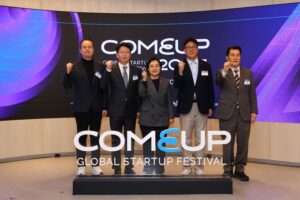The key is to not call it “cold fusion.” The current most popular term is Low Energy Nuclear Reactions (LENR). The new phrase avoids not only the so-far empty promise of cold fusion, but helps deflect criticism of what are perceived to be alchemy-like scientific pursuits.
Thirty years after the disastrous Fleischmann-Pons press conference at the University of Utah announcing a cold fusion breakthrough, true believers old and new soldier on – this time carefully coached in qualifying terminology – and this new energy technology may be inching forward toward commercialization.
If wishing could make things true, we’d all have our homes heated by low energy nuclear reactors. Likewise, our cars would come from the factory with a mini-reactor that would run for three or four years, at which point it would need to be replaced or recharged. It’s the Jetsons vision of the future but people are still toiling to find a path to this vision. The promise of a low-cost, safe, renewable energy source still intrigues researchers around the world.
The Most Recent Announcement
A Berkeley-based startup, Brillouin Energy, founded in 2005, made a subtle announcement more than a year ago. A well-respected testing company, Stanford Research International (SRI), had validated that the company’s hydrogen hot tube (HHT) technology could reliably produce more energy than was put into it. Since that initial low-key (made mainly to the LENR/cold fusion community) announcement, Brillouin has licensed its technology to two international companies. It sees licensing as the path forward to commercial.
Founder, President, and Chief Technology Officer of Brillouin Robert Godes said, “By using standard industrial manufacturing processes for our reactor test systems, we have identified an engineering pathway for manufacturing Brillouin Energy’s HHT reactor prototypes.”
Related: The Power of the Sun, Pt 1: What is Fusion Energy?
Cold Fusion Shows Promise, but Still Waiting for Results
So far, we’ve got lab experiments verified by well-known third party companies, but products still appear to be years away. A LENR group meeting more than two years ago had several experts predicting heat pump devices soon, followed by a full LENR power plant in a few years. However, the lack of government funding to advance this technology could make those timelines into less probable scenarios.
This is where the history of these endeavors comes into play. The science fiction vision of cold fusion has been around in popular culture for some time (think a less dangerous version of Star Trek’s fictional dilithium crystals). That fictional world appeared to cross over to the real one in 1980 when two respected professors/researchers, Martin Fleischmann and Stanley Pons, announced a breakthrough in this new energy field.
The initial excitement dissipated when researchers around the globe failed in attempts to replicate the experiment. Governments and companies like Toyota continued to pour tens of millions of dollars into further research – all of which came up empty-handed. By the new millennium, any enthusiasm for this technology resided only in the true believers. The U.S. Department of Energy twice declared it a dead-end endeavor, in 1989 following up on the Fleischmann-Pons announcement and again in 2004, when the Boston Globe reported that 100-200 researchers continued to pursue the topic.
Researchers will be researchers and the holy grail that is free energy continues to attract them. Hang on, cold fusion may yet find its way into your home or car.










